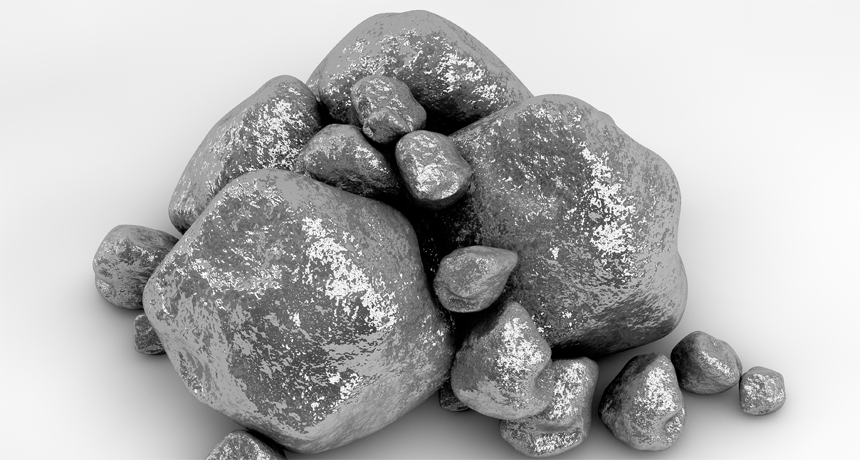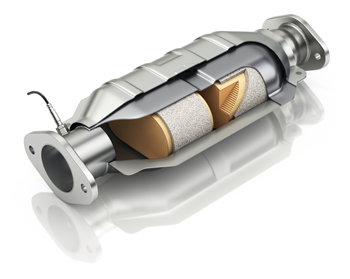Explainer: What is a catalyst?
These substances help speed up chemical reactions so that they proceed efficiently

The element platinum can be used as a catalyst in some chemical reactions.
allanswart/iStockphoto
Catalysts are the unsung heroes of the chemical reactions that make human society tick. A catalyst is some material that speeds up chemical reactions. With a helping hand from a catalyst, molecules that might take years to interact can now do so in seconds.
Factories rely on catalysts to make everything from plastic to drugs. Catalysts help process petroleum and coal into liquid fuels. They’re key players in clean-energy technologies. Natural catalysts in the body — known as enzymes — even play important roles in digestion and more.
During any chemical reaction, molecules break chemical bonds between their atoms. The atoms also make new bonds with different atoms. This is like swapping partners at a square dance. Sometimes, those partnerships are easy to break. A molecule may have certain properties that let it lure away atoms from another molecule. But in stable partnerships, the molecules are content as they are. Left together for a very long period of time, a few might eventually switch partners. But there’s no mass frenzy of bond breaking and rebuilding.
Catalysts make such a breaking and rebuilding happen more efficiently. They do this by lowering the activation energy for the chemical reaction. Activation energy is the amount of energy needed to allow the chemical reaction to occur. The catalyst just changes the path to the new chemical partnership. It builds the equivalent of a paved highway to bypass a bumpy dirt road. A catalyst doesn’t get used up in the reaction, though. Like a wingman, it encourages other molecules to react. Once they do, it bows out.
Enzymes are biology’s natural catalysts. They play a role in everything from copying genetic material to breaking down food and nutrients. Manufacturers often create catalysts to speed processes in industry.
One technology that needs a catalyst to work is a hydrogen fuel cell. In these devices, hydrogen gas (H2) reacts with oxygen gas (O2) to make water (H2O) and electricity. These systems can be found in a hydrogen vehicle where they create the electricity to power the engine. The fuel cell needs to separate the atoms in molecules of hydrogen and oxygen so that those atoms can reshuffle to create new molecules (water). Without some assistance, though, that reshuffling would take place very slowly. So the fuel cell uses a catalyst — platinum — to propel those reactions along.

Platinum works well in fuel cells because it interacts just the right amount with each starting gas. Platinum’s surface attracts the gas molecules. In effect, it pulls them close together so that it encourages — speeds along — their reaction. Then it lets its handiwork float free.
For years, other technologies have relied on platinum catalysts, too. To remove harmful pollutants from exhaust gases, for instance, cars now rely on catalytic converters.
But platinum has some downsides. It’s expensive, for one. (People like to use it in fancy jewelry.) And it isn’t easy to obtain.
Some other catalysts have risen to superstar status. These include metals with chemical properties similar to platinum’s. Among them are palladium and iridium. Like platinum, however, both are expensive and hard to get. That’s why the hunt is on for less costly catalysts to use in fuel cells.
Some scientists think that carbon molecules might work. They certainly would be less costly and readily abundant. Another option might be to use enzymes similar to those found inside living things.







